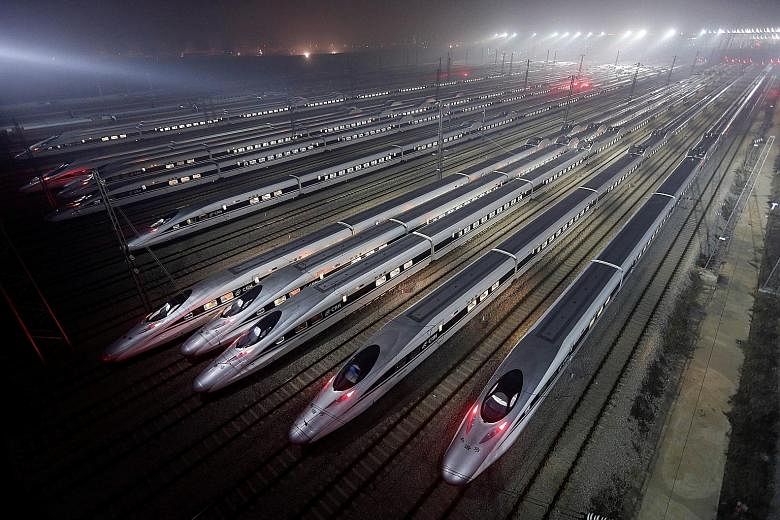Shanghai resident Ma Lihua, 38, travels at least once a month to Beijing for work, and her choice of transport is always the five-hour high-speed rail.
No flight delays due to bad weather, she says. She can also make calls and have access to Wi-Fi on the train, which allows her to work during the journey.
And the stations are located closer to city centres, making it more convenient and cost effective for Ms Ma, an assistant director at a market research firm.
"I will choose the train over flying any day even though the 553 yuan (S$112) second-class seat may not necessarily be cheaper than a discounted airline ticket," said Ms Ma, who ditched the 21/2-hour flight as soon as the HSR link started in mid-2011.
Touted as the most profitable high-speed rail in the world by China's media, the route is the busiest on the mainland, having transported more than 130 million passengers last year.
It was recently revealed that the link finally became profitable four years after it began operations, recording a net profit of 6.6 billion yuan last year.
The rail link connects the municipal cities of Beijing, Tianjin and Shanghai with the provinces of Hebei, Shandong, Jiangsu and Anhui, potentially serving a quarter of China's 1.4 billion-strong population.
The enhanced connectivity along this new economic belt has contributed to the formation of several important economic zones and city clusters, experts say.
Mr Wang Huaixiang, deputy director of the Transport and Economy Research Institute of the China Academy of Railway Science, told the Economic Times that the HSR has tied the Bohai Economic Rim, an economic region surrounding Beijing and Tianjin, more closely with the Yangtze River Delta, which comprises Shanghai, southern Jiangsu and northern Zhejiang.
It has created a dynamic link where the increased flow of energy, capital and people has formed a "dumb-bell-shaped" economic belt connecting the two major economic areas in northern and southern China, he said.
The rail link has also benefited the logistics and tourism industry. It frees up the capacity of the freight rail that runs parallel to it, helping improve the efficiency of transporting goods along this major route.
This translates into lower costs for business activities between the Bohai Economic Rim and the Yangtze River Delta, as well as the cities along the route, railway expert Sun Zhang told Xinhua news agency.
The high-speed link has greatly reduced the travel time between cities, making it easier for people to go for a weekend getaway. This has also resulted in a high-speed rail travel boom, creating more jobs and business opportunities in related sectors such as restaurants, hotels and leisure facilities.

